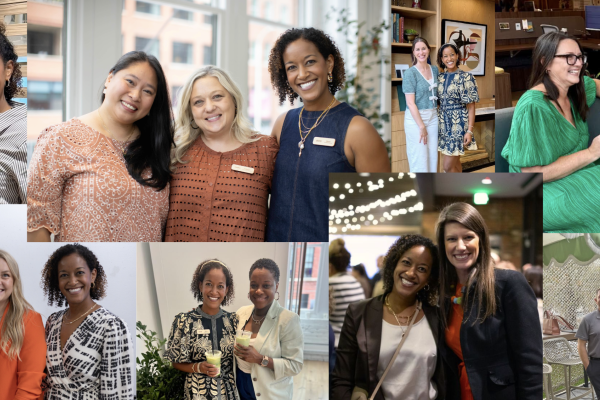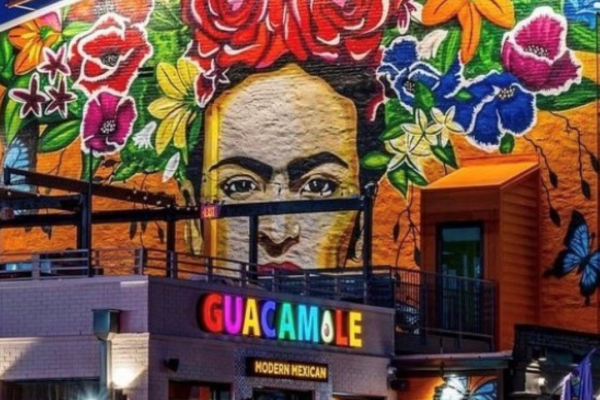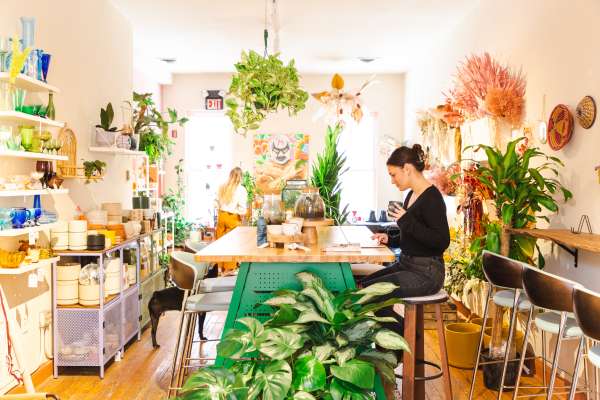Designing an interdisciplinary experience
90 miles north of Manhattan, the city of Kingston, New York, has been experiencing a sort of creative renaissance. This new focus on their arts community has stemmed from an unlikely collaboration with dedicated individuals from the Pratt Institute. Together, they’re showing the impact that art and design can have on the culture of a place and the lives of young people.
At a small coffee shop in Kingston, we met Jon Otis, professor of Interior Design at Pratt Institute, and Garrett Benisch, a recent graduate of Pratt’s masters of Industrial Design program. As locals trickled in and out, many stopped to greet the pair with a hug or quick pat on the back. Though the two have only been frequenting Kingston for a year, it is obvious their presence in the community has made an impression on its residents.
About a year ago, Otis connected with Carl Magnusson, a board member of the Martin Architecture and Design Workshop (MADWORKSHOP). The two conversed about the ways in which design could influence a community.
“Jon and his team at Pratt put together a very interesting analysis of how we could help towns create a design industry, based on their own heritage,” Magnusson said.
This idea stemmed from an interdisciplinary research incubator group organized by students of different departments at Pratt. Students from Industrial Design, Interior Design, Communications Design, and Psychology collaborated to imagine a space, curriculum, and experience that was 360 degrees in its design.
“At Pratt, we work within our own departments and tend to be a bit siloed. This idea of cross-pollination between disciplines gets discussed a lot but isn’t often activated. One of the greatest successes of this project is that it enabled that to happen,” Otis said.
With this research as a guide, Pratt and MADWORKSHOP formed a new partnership with Kingston High School and a handful of local community members. Together, they laid the groundwork for a new creative experience: the Pratt Creative Xchange (PCX).
Transforming an industrial history into present-day inspiration
With hundreds of cities neighboring NYC, one might wonder why Pratt students chose Kingston for this project. Kingston is a two-hour drive (without traffic) from Pratt; a trip that students involved with PCX would travel multiple times a week for an entire semester.
“We knew from the start that we wanted to work in a place that had an industrial history. As it turns out, Kingston built New York in many ways, with its bluestone, brickyards, and wood sawmills. It became clear early on that this project would be about organizing these amazing historical processes into one sort of motion and space, rather than trying to teach and create something from scratch,” said Benisch, one of the students behind the project.
The diverse culture of Kingston also made it a unique home for the project. Tina Dierna, Internship and Career Center Coordinator for Kingston High School explains, “We are a small, inner-city, surrounded by a suburban area, which is then surrounded by a rural area. Every day, we have kids coming in from all backgrounds, some traveling down from small farming communities in the Catskills.”
The PCX was offered as an internship for Kingston High School students that joined local artists and designers to teach the historical techniques and material processes that once fueled Kingston’s industrial economy. The arc of the curriculum began with designing the interior space of the workshop, then moved to furniture, objects, and finally, branding and packaging. As part of the program, students produced CNCd wood tables and benches, two-part molds for slip casting, and even their own organic soap.
“For the ceramic pieces, we took a pneumatic air hammer and crushed up bricks from Kingston’s shoreline, so students could sift through it. Then we asked them ‘what can you do with these different sizes, or how can you alter the color of the slip?’,” Benisch said.
The aged bricks were produced by Hutton Brickyard, a company responsible for helping build NYC.
“The connection between a product and other people gives you a connection to those people. I think feeling a story behind a product, and everything you use, and the design behind the spaces you inhabit, makes you realize how many people are behind it all. It makes us realize that our world isn’t as set as we think,” Benisch said.
Empowering a community through public art
PCX highlighted to its members the importance of a community’s history, culture, and arts in driving meaningful, future innovation.
Lara Giordano taught art at Kingston high school for 30 years. Today, she is the founder and Executive Director at the Department of Regional Art Workers (DRAW) and runs a Pop-up Gallery Group (PUGG) which she established in 2015. To say Giordano is an art activist is an understatement. For decades, her career and involvement in Kingston gave her a front-row seat to the influence art can have in informing communities.
“The most important piece of art education is to make it public. And to make sure that a diverse group of the public sees it, and understands it. For students, art is meaningful on a personal level, but it's important for them to learn how they can affect and change the community with what's available to them. I think the idea of access is the biggest hurdle that we have to overcome in order to create an equitable playing field,” Giordano said.
Today’s education system often brushes arts to the side, placing a higher emphasis on math and science. Local soap maker, Lisa Layman, understands that removing art also means removing innovation. She volunteered her time to teach the students participating in PCX. While the tactile aspect of her lesson was soap making, the deeper narrative circled around the belief that creators have the ability to transform and empower people in their communities.
 “I spoke with a number of makers involved in this project and we all feel the same way, that it is our job to pass on our knowledge and skills to keep our practices alive. What I loved about working with the students involved in PCX is that their minds were open, and they were willing to learn and participate in whatever I threw their way. Being interested in what you are learning goes a long way in helping you discover the thing you actually seek. The skills we have shown them, empower them to take what they have learned, make things for themselves, and stand on their own,” Layman said.
“I spoke with a number of makers involved in this project and we all feel the same way, that it is our job to pass on our knowledge and skills to keep our practices alive. What I loved about working with the students involved in PCX is that their minds were open, and they were willing to learn and participate in whatever I threw their way. Being interested in what you are learning goes a long way in helping you discover the thing you actually seek. The skills we have shown them, empower them to take what they have learned, make things for themselves, and stand on their own,” Layman said.
Collaborating with local artists, designers, and makers helped expand students’ views of the type of work they could one day pursue in their own community.
“This program opened my eyes and connected me to the people involved in the arts locally, and helped me realize that there is a rich arts culture right here in Kingston,” said high school student, Maizy Milliken.
The ability to create something with your hands, talk about it, learn from it, fail at it, and try again, allows knowledge to embed itself. PCX students discovered that to understand how things are made is to understand how to change and improve them.
When we listen, we change lives
With Scott Dutton’s unique connection to both Pratt and Kingston, his testament of PCX speaks volumes, “At the beginning of the program, the students were quiet, nervous, and guarded. By the end, they were excited and proud to show me all of the work they had created. You could see they were stronger, they realized all of the possibilities and opportunities that lay ahead of them.”
While today we live in a global community, this project reminds us we cannot forget to stop, observe and listen; a world of opportunity can be found right outside our own front door.
“It’s safe to say that this project has been the most significant thing I have done in my academic career. What you feel in your heart, and what you help others achieve, is what truly gives one a sense of accomplishment,” Otis said.
Pratt’s approach to the project and candid exploration of the world through design created a model of teaching to be celebrated.
“I dream of a Kingston where the community raising their kids here is directly engaged with the creative community, that is both joining, and cultivating the place,” Benisch said.
The amazing experience PCX has created for students in the Kingston community all started with a group of people willing to listen. As a result, they have changed many lives for the better, and remind us that we have the power to make a difference, no matter how small the act.



















